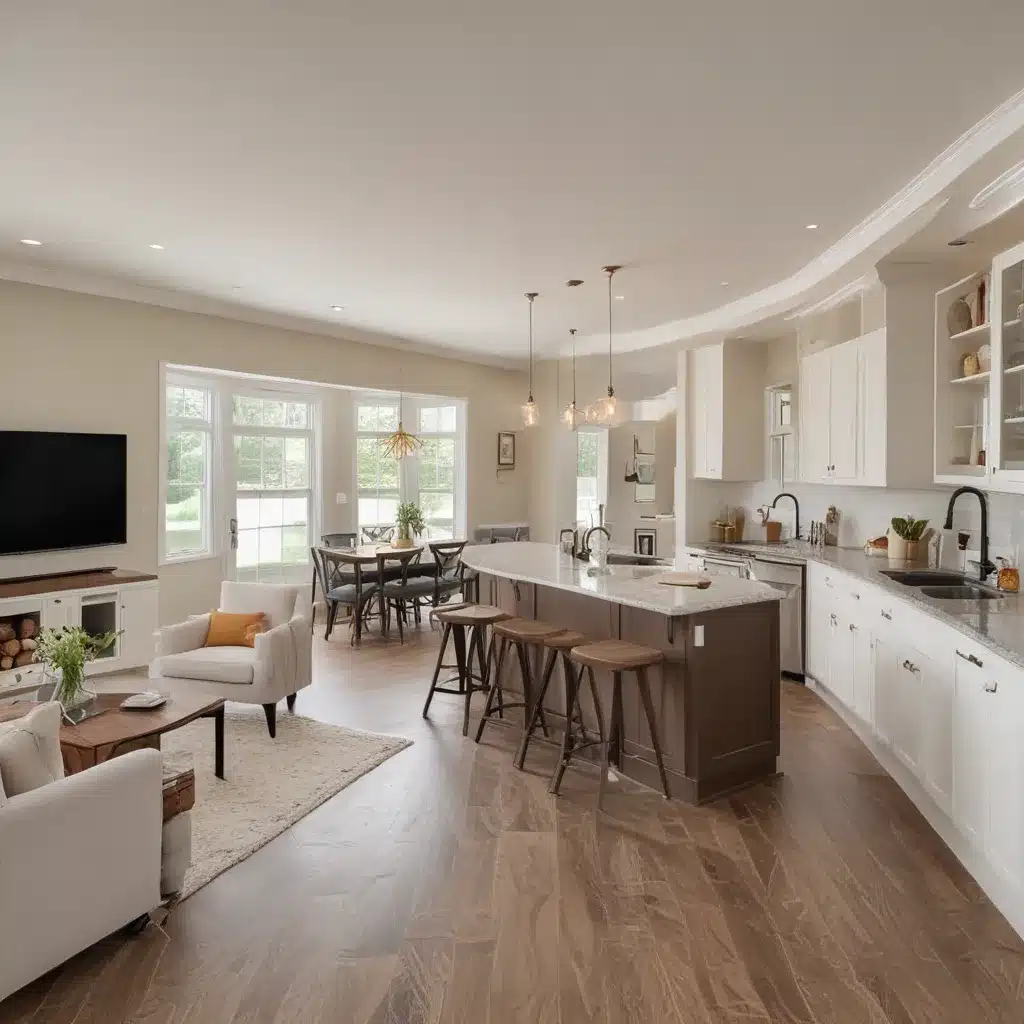
Embracing the Joys and Challenges of a Full House
Not too long ago, the idea of multiple generations living under one roof seemed like a relic of the past. But in today’s fast-paced, financially-strained world, the multi-generational household is making a big comeback. In fact, a recent Pew Research study revealed that a record 64 million Americans – that’s 19% of the population – now live in this type of arrangement.
As someone who has been there, done that, I can attest that there are definite upsides to the multigenerational lifestyle. The built-in childcare, the ability to pool resources, and the priceless family bonding are just a few of the benefits that come to mind. But I’d be lying if I said it’s all sunshine and rainbows. Privacy, personal space, and the occasional clash of personalities are real challenges that come with the territory.
Shifting demographics, longer lifespans, economic realities, and increasing ethnic diversity are all driving factors behind this resurgence of the multi-generational home. And if you’re considering joining the ranks, one thing is clear: your existing home may need some serious renovations to accommodate this new way of living.
Designing for Independence and Togetherness
When it comes to remodeling your home for multi-generational living, the key is finding that perfect balance between privacy and communal spaces. After all, you want everyone to feel comfortable, independent, and able to retreat to their own oasis when needed.
One of the best ways to achieve this is by incorporating the principles of universal design. Coined by architect Ronald Mace, this concept focuses on creating spaces that are aesthetic and usable to the greatest extent possible by everyone, regardless of age, ability, or status in life.
Gone are the days of “one-size-fits-all” home design. Universal design acknowledges that people come in all shapes, sizes, and capabilities – and your renovation should reflect that. Think ergonomic door handles, grab bars in the bathroom, wide hallways, and plenty of task lighting. The goal is to make your home both beautiful and highly functional for all who inhabit it.
Carving out Private Retreats
Of course, universal design is just one piece of the puzzle. To truly make your multi-generational home a success, you’ll also need to get creative with your available square footage. And that often means carving out private retreats for individual households.
One popular solution is to transform an existing space, like a garage, basement, or attic, into a self-contained in-law suite or apartment. With the right renovations, these areas can be converted into cozy, comfortable living quarters with their own bedrooms, bathrooms, and kitchenettes. This gives your live-in parents or adult children a sense of independence and privacy, while still keeping them close.
Prefer to keep things under one roof? No problem. Adding a second master suite or in-law apartment as an addition to your existing home can also do the trick. Just be sure to include separate entrances, living areas, and even small kitchenettes to foster that sense of independence.
Designing the Communal Hub
Of course, the beauty of multi-generational living is the ability to come together as a family. And that’s why it’s so important to devote equal attention to the communal spaces in your home.
The kitchen is often the heart of the multi-generational household, serving as a hub for cooking, socializing, and even homework. That’s why it’s crucial to design this space with accessibility and functionality in mind. Think multiple sinks, dishwashers, and countertop heights to accommodate everyone from grandkids to grandparents.
But the kitchen isn’t the only communal space that needs some TLC. The living room, dining area, and even outdoor spaces should also be optimized for multi-generational use. Flexible furniture arrangements, built-in storage, and zones for different activities can help foster a sense of togetherness while still preserving individual needs.
And don’t forget about the technology! Smart home features like voice-activated assistants, wireless controls, and IoT-connected appliances can make life exponentially easier for aging residents and busy families alike.
The Financial Advantages of Going Multi-Gen
Of course, all of these renovations come with a price tag. But when you consider the alternative – the staggering costs of nursing home care or assisted living facilities – the investment in a multi-generational home starts to look like a pretty savvy financial decision.
According to the ABC Home team, the average cost to renovate a three-bedroom home for multi-generational living is between £50,000 and £100,000. That may sound like a hefty sum, but when you factor in the potential savings on childcare, eldercare, and household expenses, it starts to make a lot of sense.
Not to mention, a well-designed multi-generational home can also be a major selling point down the road. As the population continues to age and more families seek out this lifestyle, homes with built-in flexibility and accessibility features will be in high demand. So in a sense, your renovation investment is also an investment in your future resale value.
A Labor of Love (and Compromise)
At the end of the day, transforming your home into a multi-generational oasis is a labor of love. It takes careful planning, open communication, and a healthy dose of compromise. But if you get it right, the payoff is priceless.
I’ll never forget the day my in-laws moved in with us. There were certainly a few growing pains as we adjusted to our new normal. But watching my kids bond with their grandparents, seeing the stress of eldercare lifted from my husband’s shoulders, and having an extra set of hands around the house – it made every ounce of effort worth it.
So if you’re ready to take the plunge into multi-generational living, don’t be afraid to get your hands dirty with a little renovation. With the right design plan and a lot of love, you can create a home that celebrates the best of both independence and togetherness. After all, isn’t that what family is all about?

















